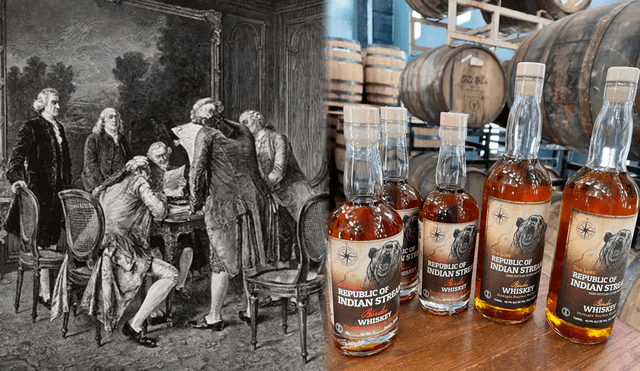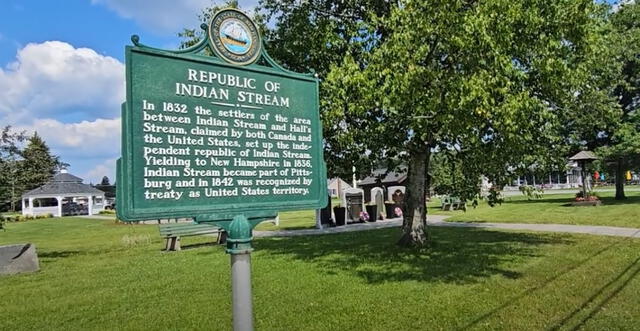The forgotten nation of Indian Stream: A short-lived country between the U.S. and Canada and its Whiskey legacy
Nearly two centuries ago, a forgotten chapter in North American history unfolded when a disputed territory between the U.S. and Canada declared itself an independent nation.

Since Donald Trump arrived to the White House, political tensions emerged with Canada. The republican shared on his Truth Social platform the intentions to impose tariffs on Canadian exports if the country's government failed to curb illegal immigration and drug trafficking. He also declared his intention to make Canada the 51st state.
However, despite the political tensions, there has been no significant impact on the U.S.-Canada border, which remains one of the least militarized international boundaries in the world, despite being the longest. Interestingly, nearly two centuries ago, a territorial dispute between the two countries led to the creation of a now-forgotten independent state—the Republic of Indian Stream.
What the Republic of Indian Stream was?
Though it never received official recognition, the Republic of Indian Stream functioned as an autonomous and self-governing entity for more than three years.
The small nation occupied approximately 282 square miles in what is now the northeastern part of New Hampshire, near the borders of Vermont and the Canadian province of Quebec.
The origins of the Republic of Indian Stream can be traced back to a border dispute caused by differing interpretations of the 1783 Treaty of Paris, which ended the American Revolutionary War.
While the treaty was meant to delineate the international border between the newly independent United States and British Canada, it contained ambiguities. The key issue revolved around the phrase "the northwesternmost head of the Connecticut River," which was meant to determine the boundary.
Authorities in New Hampshire believed this included Hall Stream, one of the river's tributaries, thus claiming the disputed land. Meanwhile, British Canadian officials insisted that only the main Connecticut River was part of the agreement, meaning they considered the territory as part of Canada.
This ambiguity created an opportunity for land speculators, notably the Eastman and Bedel companies, who exploited the situation by acquiring disputed land from Indigenous groups—often through questionable legal means—and selling it to settlers eager to stake their claims.

A sign in New Hampshire, were the Republic of Indian Stream was. Photo: Reddit
How was life in the Indian Steam Republic?
Over time, the settlers living in this contested area found themselves in a legal limbo, paying taxes to both British and American authorities while receiving little in return. Frustrated with their uncertain status and lack of governance, they decided to take matters into their own hands.
In July 1832, the settlers formally declared the Republic of Indian Stream an independent and sovereign state. They drafted a 13-article constitution and established a governing body to oversee their affairs.
Unlike the United States, which had a single executive leader, the Republic of Indian Stream was governed by a council of five individuals. This system was inspired by New England town meetings and European city-state governance models, allowing for shared decision-making.
The republic also embraced democratic ideals, including religious freedom and protections against cruel punishments—principles that would later become foundational to modern democracies.
For three years, the republic functioned independently, but internal divisions among its residents—some favoring annexation by New Hampshire, others by Canada—ultimately led to its downfall.
A whiskey tribute to a forgotten Republic
Despite its brief existence, the memory of the Republic of Indian Stream has not been entirely lost.
In recent years, entrepreneurs Ron Vars and Dan Gray decided to pay tribute to this unique piece of history by launching a whiskey brand named after the defunct republic.
"We chose this brand because of our deep love for the region and the fascinating story behind the Republic of Indian Stream," Vars explained in an interview with BBC.
"Ever since I was a child, I have been captivated by the idea of a group of people in the 19th century declaring their own independent republic on American soil. It’s an incredible story," he added.
While Indian Stream may have disappeared as a political entity, its legacy remains—a reminder of the fluid and often unpredictable nature of history.
